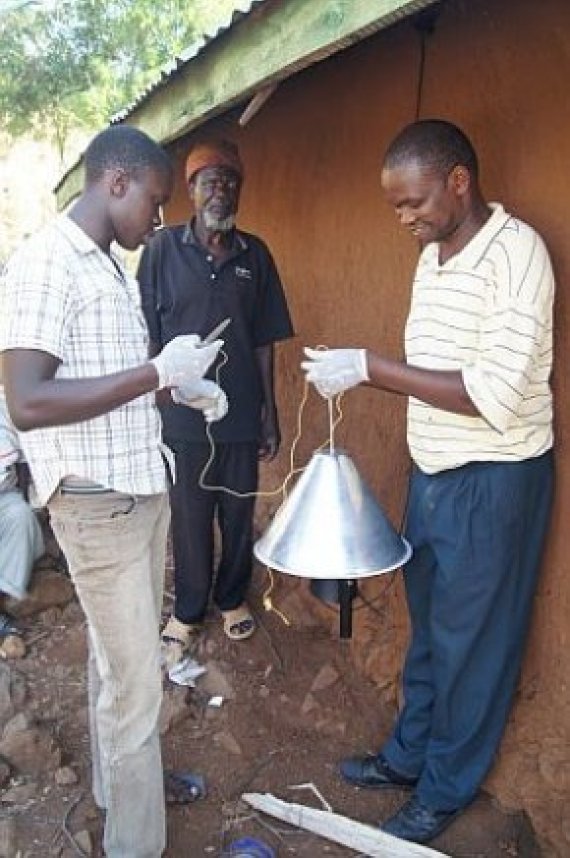Takken coordinated the Solarmal project between 2012 and 2015 on the Kenyan island of Rusinga in Lake Victoria. All 4300 households were given a trap containing an odour mix developed in Wageningen that snared the malaria mosquitoes in the houses. The residents were tested for malaria before and after the odour traps were installed.
The researchers monitored the prevalence of malaria — how many of the island’s 25,000 inhabitants still had the malaria parasite in their blood.
Parasite
Infection with malaria often does not make adults ill but they can still carry the parasite, explains Takken. The malaria parasite in the human body dies naturally after 12 months but until then these people can infect other mosquitoes with the parasite, thereby helping malaria to survive. This prevalence among the population fell in the space of two years from 25 to 12 percent. ‘That is a huge drop in such a short period,’ says Takken.
Mosquito
The researchers also found that the population of Anopheles funestus, the most important mosquito species responsible for transmitting malaria on the island, fell during the project by 70 percent. Takken: ‘This decline means there are only a limited number of new malaria infections, so hopefully malaria is no longer a significant health problem on the island.’
The results from the malaria project were presented to the people in Kenya last year and have now been published in the scientific journal The Lancet. Takken reports that the island’s inhabitants have now adopted this means of malaria prevention. They have formed 82 local savings clubs that collect money once a month for maintenance of the mosquito traps and solar panels. ‘Those savings funds are keeping the staff who set up the traps and panels for the project in work and they’re keeping the mosquito traps operational.’
Elimination
Takken would like to carry out a follow-up study on Rusinga to track the development of malaria on the island. ‘I’m interested to see whether this will lead to the elimination of malaria or whether prevalence will remain stuck at 10 percent.’ He is also looking at the options for rolling the project out in a larger area.
The people living on Rusinga had no electricity in their homes. Because the odour traps use electricity, they were also given a solar panel, a battery and a charger. The entire system costs 150 euros per household. Takken thinks that sum is feasible when you consider how effective the odour trap is in combating malaria and the fact that until recently African people were spending about 10 percent of their income on the fight against malaria.
The Solarmal project was largely financed through crowdfunding among Wageningen alumni.
Want to see more about this project? Check out the video below:

